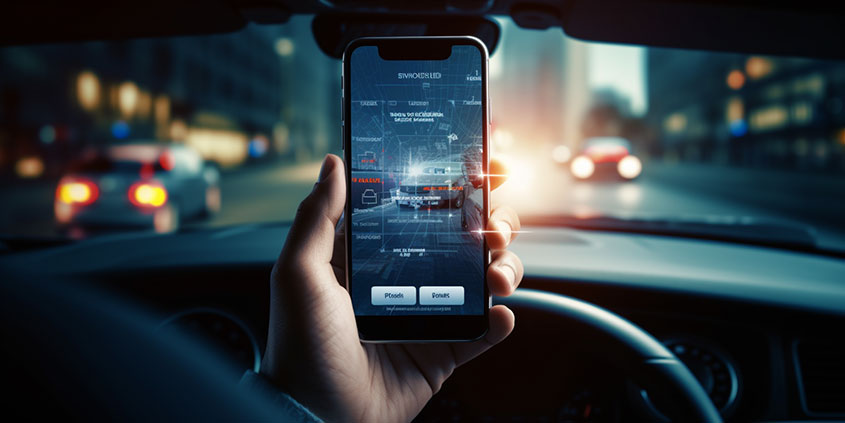Welcome to Washington State, a region of diverse landscapes from the Pacific coastline to the snow-capped peaks of the Cascade Range. As you venture through the Evergreen State, it's essential to be well-versed in Washington state driving laws to ensure your safety and the safety of others.
This comprehensive guide will cover licensing requirements, rules of the road, seatbelt and child restraint laws, distracted driving laws, DUI and alcohol-related offenses, and teen driving laws. By understanding and adhering to these regulations, you'll be well-equipped to navigate Washington's roads safely and responsibly.
Road Accidents in Washington State
With a population of over 7.6 million residents and countless tourists visiting each year, Washington's roads can be busy and demanding. Highway safety is of utmost importance in the state, as demonstrated by recent traffic statistics.
In 2022, traffic casualties have surged in Washington, making it one of the worst states for a surge in traffic fatalities. In the first half of 2022, the state saw a 31% increase in traffic deaths compared to the previous year. By staying informed and abiding by Washington state driving laws, you can help reduce these alarming numbers and promote a safer driving environment for everyone.
Rules of the Road in Washington
Washington state has established a set of rules that every driver must follow to ensure the safety of all road users.
Traffic Signals and Signs
Traffic signals and signs are critical for maintaining order and safety on the roads. Drivers must obey all posted signs and signals, including stop signs, yield signs, and traffic lights. Ignoring these traffic controls can result in fines and penalties.
Lane Usage and Turns
In Washington, drivers should stay in the right lane except when passing or turning left. To make a turn, use the appropriate signal at least 100 feet before the turn. Right turns on red are allowed after a complete stop unless posted otherwise, while left turns on red are only permitted from a one-way street onto another one-way street.
Speed Limits
Speed limits in Washington are set to protect everyone on the road. In general, the speed limit is 70 mph on rural interstates, 60 mph on urban interstates and other divided highways, and 25 mph in residential areas unless otherwise posted. School zones have a reduced speed limit of 20 mph when children are present.
Right-of-Way
Right-of-way rules are essential for preventing collisions. In Washington, drivers must yield the right-of-way to pedestrians in crosswalks and at intersections. They must also yield to emergency vehicles with lights and sirens activated when merging or entering traffic.
Seatbelt and Child Restraint Laws
Seatbelts save lives, and Washington state driving law requires all drivers and passengers to wear them. Children under 13 years old must ride in the back seat whenever possible, and those under eight years old or shorter than 4'9" must be secured in an appropriate child restraint system. Booster seats are required for children who have outgrown their child safety seats but are not yet eight years old or 4'9" tall.
Distracted Driving Laws
Distracted driving is a leading cause of accidents in Washington State. It is illegal to use a handheld cell phone while driving, and this includes texting, talking, or browsing the internet. Hands-free devices are permitted, but it's crucial to stay focused on the road at all times to ensure the safety of everyone.
Driving under the influence of alcohol or drugs is a severe offense in Washington, with strict penalties for those caught breaking the law.
Blood Alcohol Concentration Limits
The legal Blood Alcohol Concentration (BAC) limit in Washington is 0.08% for drivers aged 21 and older, 0.04% for commercial drivers, and 0.02% for drivers under 21. Driving with a BAC above the legal limit is considered Driving Under the Influence (DUI) and can lead to serious consequences.
DUI Penalties
Penalties for DUI in Washington can include license suspension, hefty fines, mandatory alcohol education programs, and even imprisonment, depending on the severity of the offense and the driver's history. Repeat offenders may face even harsher penalties.
Teen Driving Laws
Washington has implemented a Graduated Driver Licensing (GDL) program to help teens gain experience behind the wheel in a safe and controlled manner.
The GDL program consists of three stages: the learner's permit phase, the intermediate licensing phase, and the full licensing phase. During the learner's permit phase, teens aged 15 to 17 years must complete a state-approved driver's education course and 50 hours of supervised driving, including 10 hours of nighttime driving.
In the intermediate licensing phase, teens can obtain a driver's license after passing a road test. There are restrictions on nighttime driving and the number of passengers allowed in the vehicle during this phase. After holding an intermediate license for at least six months without any traffic violations, drivers are eligible for a full license with no restrictions.
Conclusion
Washington State driving laws are in place to ensure the safety of all road users. By understanding and adhering to these regulations, you can contribute to a safer driving environment for everyone. Stay informed, drive responsibly, and remember that the rules of the road are there to protect us all.
Don't forget to visit our website, Keep Driving, for more valuable information on driving laws, safety tips, and updates. Together, let's make our roads safer for everyone.







